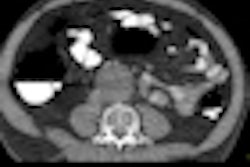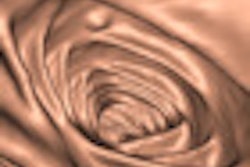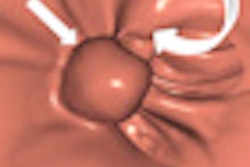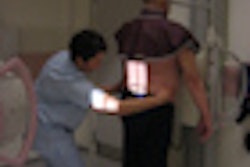U.K. radiographers are making life easier for both radiologists and colorectal cancer screening patients while improving disease detection at a U.K. hospital, according to a report presented at the 2011 European Congress of Radiology (ECR).
The full participation of radiographers in virtual colonoscopy (also known as CT colonography, or CTC) "improves the patient's experience and the department's," said Rachel Moore, a radiographer at Royal Liverpool University Hospital.
Before the change, there were too few radiologists to examine CTC studies at the hospital, which continue to increase in demand. CTC studies work for the typical symptomatic screening patient, thus the use of barium enema scans, which used to handle the bulk of screening, have declined, she said. At the same time, radiographers with advanced GI training were being underutilized.
Adding to the problem, CTC studies were becoming increasingly time-consuming, taking up too much of the time CT radiologists were accustomed to using for other CT imaging tasks.
Three fluoroscopy rooms at the hospital were underutilized, as were the skills of the specialized radiographers, including one trained for advanced general fluoroscopy, one trained in lower GI endoscopy, and one performing full-time CT and MRI.
A sharp reduction in the number of fluorosocopies performed in recent years has led to a problem of "de-skilling" advanced radiographers, Moore said.
Putting radiographers on the team
The hospital decided to make some changes. In the new system, the radiographers control and prioritize the list of who will receive CTC exams. CTC is performed with a CT-specialized and GI-specialized radiographer both in attendance.
"The GI radiographers now vet CT requests and prioritize appointments to perform a mix of screening, symptomatic and known cancer exams, as well as unprepped [colonic insufflations] with fecal tagging" she said.
At first the radiographers were skittish about some parts of the test. They needed additional training and experience, and weren't "keen on putting tubes in bums" or insufflating colons, Moore said
Now, a year later, the GI radiographers are fully integrated into the colon screening process, assessing the adequacy of the bowel prep, performing prone exams, and continually analyzing the quality of colonic insufflation.
"The radiographer will come into the room, explain the procedure as per barium enema, and also explain to the patient that they will need two or more scans," she said. "It's also important for the radiographer to determine whether a staging chest scan will be performed." That is, if a tumor is discovered on the initial look, the GI radiographer will perform a concurrent CT thorax scan.
The radiographers also perform a focused real-time review of the scout images while the patient is prepared for prone and supine CTC scanning, correcting insufflation problems before the prone and supine images are acquired.
If the scout is normal, the CT radiographer positions the patient supine while the GI radiographer performs a 2D fly-through luminal exam of the prone colon. The radiologist is alerted to suspicious findings encountered at any step of the process, Moore said.
First-year results
An analysis of the new system found that 1,032 CTC studies of symptomatic screening patients were performed with real-time review between January 2010 and January 2011.
Forty-eight radiographer-justified thoracic screening exams were added after their fly-throughs detected 41 previously undiagnosed colon cancers, one renal cancer, one gynecologic malignancy, one lung cancer, and four cancers due to liver metastases, Moore reported.
Diagnostic-quality insufflation of the colon was achieved in 97 % of cases, versus only 76% for the radiologists, Moore said.
The new system isn't perfect, she said.
On the plus side, the patients' lists are better kept, and 6-7 CTCs can be performed each day rather than the previous 4-5, Moore said. The radiographer gains experience in CT, image interpretation, and general pathology. And CTC exams end up with increased viewing time and additional detection of pathology.
"Unfortunately there were four cases of overstaging [by radiographers], however, these were very difficult cases that were due to colitis or diverticular strictures," Moore said. "If we are uncertain, we go back to the clinic and request endoscopy first."
The new order does solve the problem of de-skilling and role extension of advanced-training radiographers, and improves the experience of staff and patients in the facility, she said.
However, radiographers are not yet reporting the luminal component of CTC, she said. Radiologists are not only eager to start reporting, the facility's radiologists are still struggling with the ever-increasing patient workloads, Moore said.



















